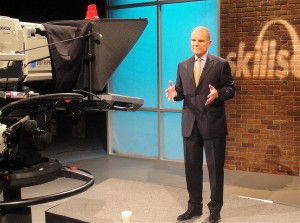Want to Close the Engagement Gap? Offer Growth and Learning Opportunities

So why is it that organizations have such highly refined analytics about when and how to interact with customers and prospects to maintain the highest revenue uplift and retention rate? Companies invest enormous sums to understand exactly when to place a deft customer service phone call, or extend a sweetened interest rate, or include that ‘bonus VIP’ service – all to raise customer retention, and revenue. We employ neuroscience and psycho-graphic profiling to understand motivating factors in buying behaviors (did you know grocery stores use slow ambient music to seduce you into staying longer and buying more?) – and yet, many companies still operate in a command-and-control fashion with their people, treating them more as instruments.
In Closing the Engagement Gap, by Julie Gebauer and Don Lowman, they argue that one of the keys (there are five) to heightened engagement is to offer continuous learning and intellectual development opportunities. In one example, at EMC’s R&D facility in China, the general manager understood that professional growth and camaraderie were big motivating factors and created both formal and informal learning, networking, and socializing activities. Consider the inverse effect – years ago EMC opened a technical facility in India and immediately offshored/insourced the more rudimentary and mundane tasks that the U.S. engineers didn’t want. You can guess the Indian engineers were frustrated, annoyed, and characteristically weren’t so inclined to give any discretionary effort to their work.
And there’s the key – since everyone can exercise a discretionary choice whether to be engaged or not, what are the factors that determine employee engagement? According to Lowman and Gebauer’s Global Workforce Study, these are the top five:
- Senior management’s sincere interest in employee well-being
- Opportunity an employee has to improve skills and capabilities
- Organization’s reputation for social responsibility
- Opportunity an employee has to provide input into decision-making in his department
- Organization’s ability to quickly resolve customer concerns
Right there at the top – #1 and #2: strength of relationship with your boss, and opportunity for intellectual and professional growth is what drives engagement, innovation, and yes, shareholder value.And even if you’re not so hip on driving equity-holder wealth, it sure makes a fun and interesting place to work.







